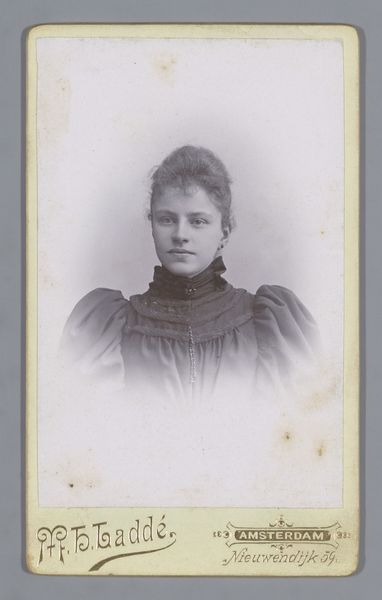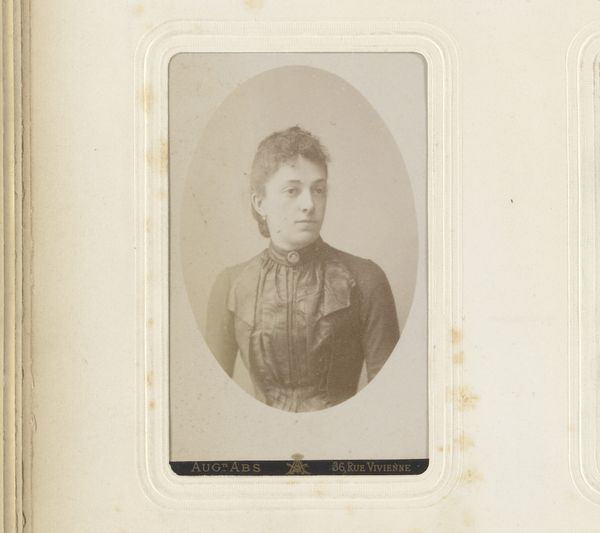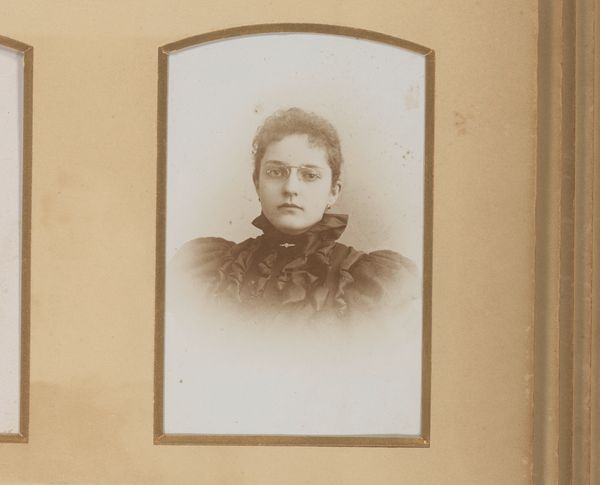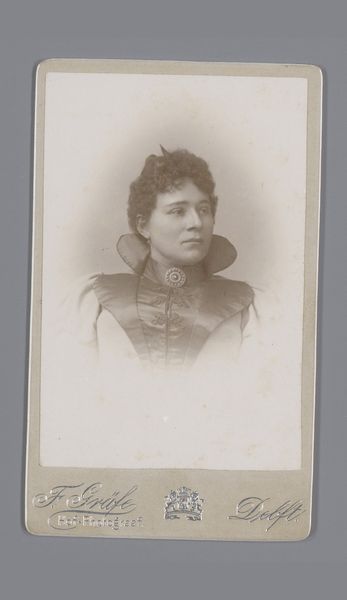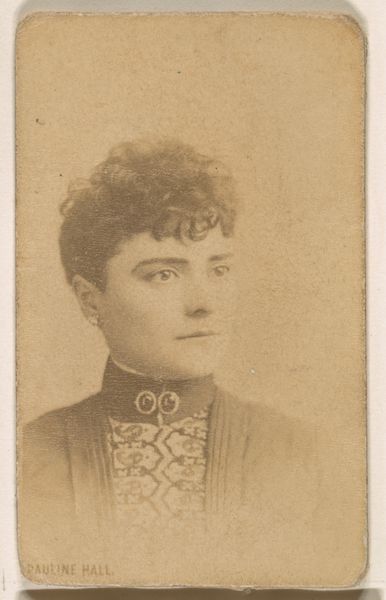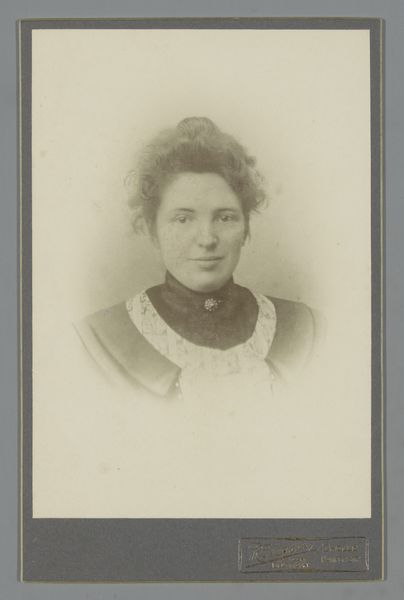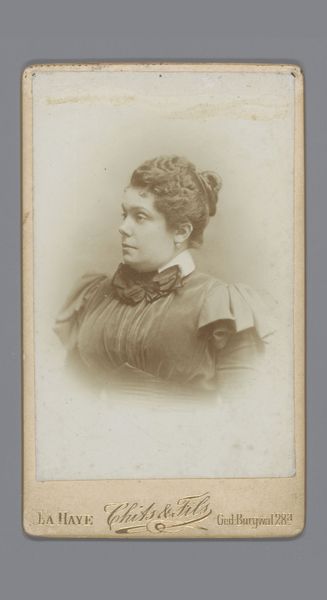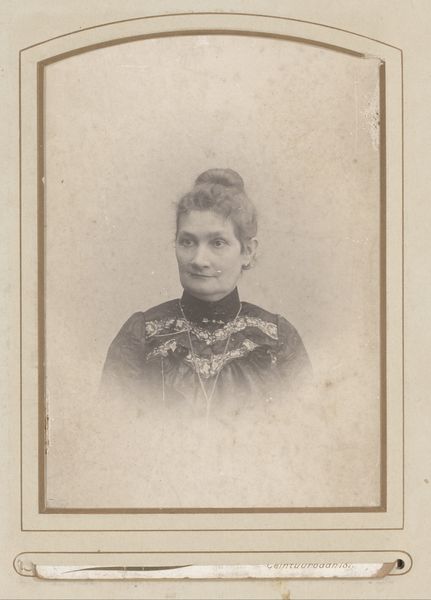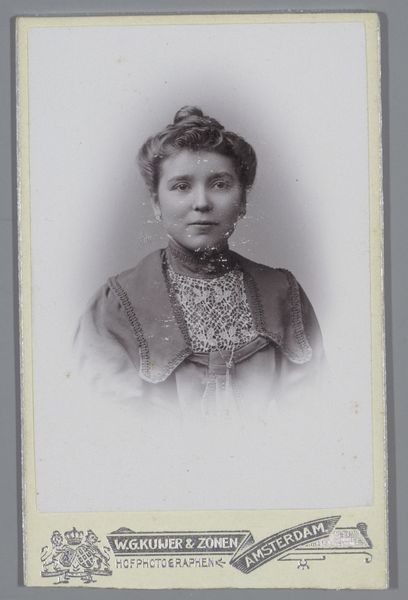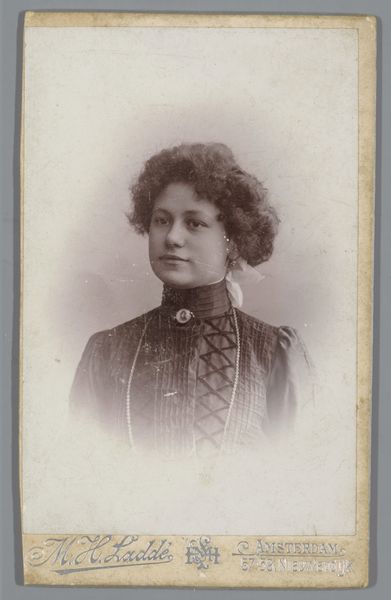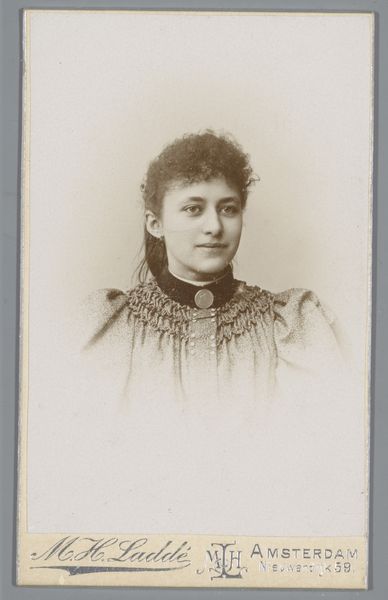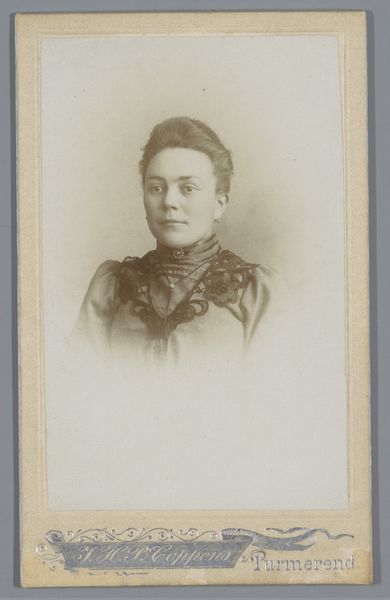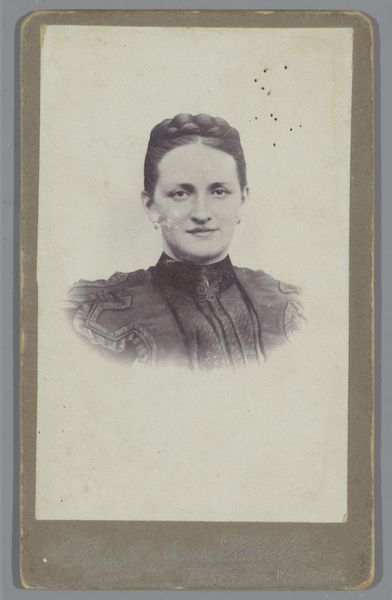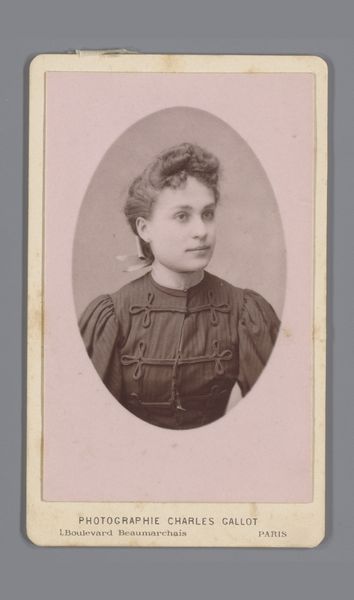
photography
#
portrait
#
photography
#
historical fashion
#
19th century
#
genre-painting
#
realism
Dimensions: height 104 mm, width 63 mm
Copyright: Rijks Museum: Open Domain
Curator: This image is a portrait of an unknown woman, captured sometime between 1880 and 1900 by Henri Last. It's a fascinating piece of 19th-century photography. Editor: The sepia tones lend it an immediate sense of nostalgia, a kind of melancholic beauty. Note how the composition isolates the subject, pushing her to the forefront. Curator: Yes, the composition does draw your eye immediately. We should remember that portrait photography at this time was becoming increasingly accessible, leading to a democratization of image making, as middle classes wanted to capture likeness in a relatively affordable manner. Editor: And if you look at the lighting, you can see it highlights the texture of her clothing. The ruffled collar, the patterned fabric... all of which emphasize a structured form that reflects prevailing standards of beauty. Curator: Those details in fashion tell us much about the societal roles and expectations placed on women during that era, especially if one considers their construction, manufacture, and sale as indicators of available materials for the expanding middle classes. Editor: Undoubtedly, clothing as a marker is potent. More formally, what stands out for me is the slightly averted gaze. It infuses the portrait with a psychological depth. She is not merely being looked at. She’s thinking, feeling. Curator: Absolutely. And considering the constraints on women’s expressions during this period, it becomes even more compelling to explore such nuances in photographic work that suggests the expansion of agency, given emerging markets and consumer appetite for representation in cartes de visite or related photographic products. Editor: Ultimately, the technical details—the way the photographer has used light and shadow, framing, focus to evoke emotion, all point to a powerful study in both form and affect. Curator: For me, the photograph reveals as much about evolving social frameworks as about a certain aesthetic value, thus embodying the transformations that define production and society as a whole during this key moment. Editor: An image to study both its intrinsic pictorial dynamics and broader cultural ramifications. Curator: A potent distillation of a very specific time, place, and visual aesthetic that can give new perspective.
Comments
No comments
Be the first to comment and join the conversation on the ultimate creative platform.
